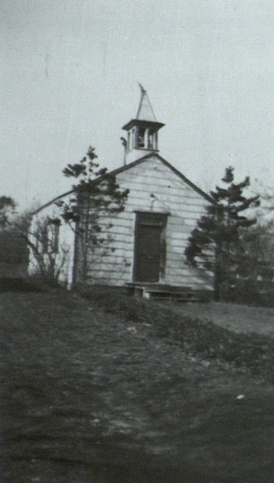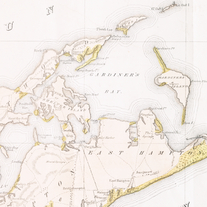Freetown
Freetown is a small, unincorporated hamlet within the Town of East Hampton, located along Three Mile Harbor Road between Jackson Street and Abraham's Path. East Hampton residents, according to 1790 census takers, included approximately 1,299 whites, 99 slaves, and 99 people classified as "all other free people." Following the passage of the Gradual Emancipation Act of 1799 in New York State, John Lyon Gardiner and other wealthy local slave-owners settled newly freed slaves in Freetown. Some of these households bore the last names of their former owners in subsequent census records. Rufus Right, Cyrus Hedges, William Gardiner, and Luce Gardiner were early African American residents of Freetown.
Throughout the 19th century, the African Americans living in Freetown worked as laborers and skilled tradespeople on farms, at sea, and in the homes of local white families. There were few opportunities to own or improve property so most African Americans sought wage labor. As whaling and related industries became increasingly vital, Long Island played an important role in offering opportunities to local African Americans. Community life also focused on family and faith. Many attended church with white and Native American families at St. Mathew's Chapel on Three Mile Harbor Road.
Freetown continued to expand its diversity well into the 20th century. In the late 19th century, Arthur Benson, a wealthy businessman, offered cash and deeds to small plots in Freetown to Montauk Indians seeking rights to tribal lands in Indian Fields. The Great Migration in the late 20th century brought new African American families to Freetown. Today, the community increasingly has been absorbed by the neighborhoods surrounding it.
This entry contributed by the
Center for Public Archaeology at Hofstra University
Related Media
Video

|
Allison Manfra, Queens College Anthropology Department, describes Freetown, a historically African American community in East Hampton associated with emancipation resettlement.
|
Images

|
Freetown is remembered as a location where freed slaves settled in the 18th and 19th centuries.
|

|
The African American residents of Freetown attended church with whites and Native Americans at the St. Mathew's Chapel on Three Mile Harbor Road. The building was relocated in the twentieth century.
|





